|
|
|
|
|
|
|
|
|
|
|
|
|
|
|
|
|
|
|
|
|
|
 |
|
|
|
|
|
|
|
|
|
|
|
|
|
|
|
|
|
|
|
|
|
|
|
|
|
|
|
|
|
|
|
|
|
|
|
|
Menu |
|
|
|
|
|
|
|
|
|
|
|
|
|
|
|
|
|
|
|
|
|
|
|
|
|
|
|
|
|
|
A
brief study of the great Sikh Artist - extracts from a book by Dr. K.S. Khokhar. |
|
|
|
|
|
|
|
|
|
|
|
|
|
|
|
Sardar
Sobha Singh was an eminent artist of Punjab. Widely acclaimed as the saint-artist
of the people, he created a new intensity by delving deep into the spirit of
the subject. The conception and execution of his portraits and the landscape
paintings remain singularly unique in the sense that they introduce the great
spiritual masters and the heroes in a manner that simply evokes adoration. Art
for him was not merely an amusing pastime. He held that it had the capacity
to elevate the soul and refine the taste of the people. He painted great men,
martyrs and pleasing aspects of nature and refused to accept the ominous events
and erotic scenes as objects for his art. His portraits of the Gurus, avatars,
saints and the immortal lovers shall endure the test of time. |
|
|
|
|
|
|
|
|
|
|
|
|
|
|
|
|
|
|
|
|
|
|
|
|
|
|
|
|
|
|
|
|
|
|
|
|
|
|
|
|
|
|
|
|
|
Sobha
Singh, for his young admirers was the famous artist 180 cm tall, fair complexioned,
sharp featured, slim and handsome of delicate build, with a few sprinkling of
pock marks on his face. Normally he wore soft and natural coloured long shirt
and pyj ama. When going out, he half wrapped himself in a soft pashmina shawl
and carried a black thin, wide, zippered portfolio in his hand. He used thin
frame spectacles. To compensate the length of his left leg, he wore a high wooden
sandal on this side. He gave an impressive look with his shining grey hair immaculately
brushed and his long beard and moustaches. He took long strides limping on his
left leg. He had long soft hands and he could strike them against his forearms
separately by bending them backward. He was very soft spoken, humble, full of
wit and wisdom. His talks were seasoned with anecdotes, quotations, similes,
parables and sometimes with indirection. |
|
|
|
|
|
|
|
|
|
|
|
|
|
|
|
|
|
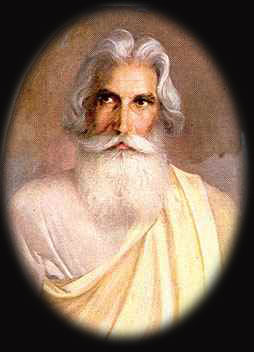 |
|
|
|
|
|
|
|
|
|
|
|
|
|
|
|
|
My
art is my religion and my aim in it is to give a form to the formless - Sobha
Singh |
|
|
|
|
|
|
|
|
|
|
|
|
|
|
|
|
|
|
|
When
at work, he used a long stick to support his hand especially when the painting
was large and the canvas was wide. He sat at his easel for eight to twelve hours
even during his eighties. An early riser and in the ambrosial hours he used
to read the philosophical works of Krishnamurti, Emerson, Thoreau and Whitman
who were his favourite writers. Khalil Gibran attracted him in his late years.
He lived a free life suiting his aesthetic sense. He loved solitude, and felt
himself complete in harmony with nature. He was a strict vegetarian, frugal
but very selective eater, avoided food seasoned with condiments and was fond
of sweets, fruit and coffee. He was born at Sri Hargobindpur in Punjab but lived
most of his life at Andretta, near Palampur in Himachal Pradesh, a small village
and a very calm place with snow capped Dhauladhar forming the imposing backdrop. |
|
|
|
|
|
|
|
|
|
|
|
|
|
|
|
The
semi-circular verandah of his house faced east and gave a broad view of the
horizon. It had paintings hanging on its walls. There was a big cage with parapets
and sparrows. Rinti - a light golden big Gaddi sheep dog was usually seen around.
He came out in the morning, sat and enjoyed the dawn in their company. His
famous paintings are Guru Nanak (Blessing attitude with raised hand), Guru
Gobind Singh (Last-Resort) and Guru Tegh Bahadur. His painting of Sohni-Mahiwal
brought him an instant fame. He was a member of different art academies,
art societies and art-associations. He was a fellow of Punjabi University,
Patiala He was the State Artist of Punjab. He was declared Artist of the People
in 1972. The Government of India in 1984 awarded him Padamshri. The Punjabi
University conferred on him the degree of Doctor of Literature (Honoris Causa)
in 1985. |
|
|
|
|
|
|
|
|
|
|
|
|
|
|
|
|
|
|
|
|
|
|
|
|
|
|
|
|
|
|
|
|
|
|
|
|
|
|
|
|
|
|
|
|
|
|
|
|
|
|
|
|
|
|
|
|
|
|
|
|
|
|
|
|
|
|
|
|
|
|
|
|
|
|
|
|
|
 |
|
|
|
|
|
|
|
|
|
|
|
|
|
|
The
cottage at Andretta where Sobha Singh lived and worked since 1948 for over 38
years |
|
|
|
|
|
|
|
|
|
|
|
|
|
|
|
|
|
|
|
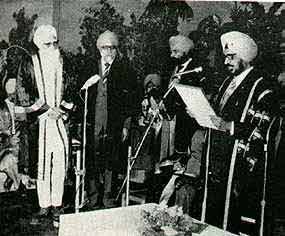 |
|
|
|
|
|
|
|
|
|
|
|
|
|
|
|
|
|
|
|
|
|
|
|
|
|
|
Dr.
S.S. Johal, Vice-Chancellor, Punjabi University Patiala, honouring Sobha Singh
with the degree of Doctor of Literature,
honor i s causa |
|
|
|
|
|
|
|
|
|
|
|
|
|
|
|
|
|
|
|
|
|
|
Promotion
of Art depends upon the determination of the artist - Sobha Singh |
|
|
|
|
|
|
|
|
|
|
|
|
|
|
|
|
|
|
|
|
|
|
|
|
|
|
|
|
|
|
|
|
|
|
|
|
|
|
|
|
|
|
|
|
|
|
|
|
|
|
|
|
|
 |
|
|
|
|
|
|
|
|
|
|
|
|
|
|
|
|
|
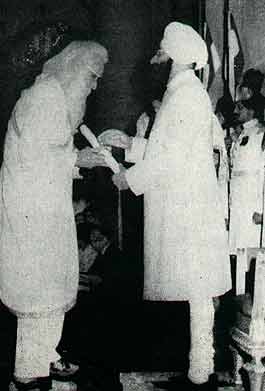 |
|
|
|
|
|
|
|
|
|
|
|
|
|
|
|
|
|
|
|
|
|
|
|
|
|
|
|
|
|
|
|
|
|
|
|
Sobha
Singh-The Seeker of the Divine Grace |
|
|
|
|
|
|
|
|
|
|
|
|
|
|
|
|
|
|
|
|
|
|
|
|
|
|
|
|
|
|
|
|
|
|
|
|
|
|
My
Art is my religion and my aim in it is to give a form to the formless. Sobha
Singh |
|
|
|
|
|
|
|
|
|
|
|
|
|
|
|
|
|
|
|
Receiving
the Padma Sri Award from Giani Zail Singh, President of India-1983 |
|
|
|
|
|
|
|
|
|
|
|
|
|
|
|
|
|
|
|
|
|
|
|
|
|
|
|
|
|
|
|
|
We
are proud to present an article by courtesy of The Tribune. This article was
published on the occasion of the 84th birthday of Sardar Sobha Singh (29th Nov.1985)
in The Tribune Sunday Reading (Nov.24, 1985). The Author,
Dr. M.S. Randhawa, a great critic and connosieur of Art, died on March 3, 1986.
|
|
|
|
|
|
|
|
|
|
|
|
|
|
|
|
|
|
Sobha Singh : Artist of Unity
Sobha Singli has not painted the martyrdom of Sikhs in their
struggle against Mughal rulers.
He believed
Such paintings would never allow men to forget tyranny and hatred, arid
blood cannot be cleaned with blood. The paintings of wars and religious
intolerance widen the gulf among men. But the paintings of the martyrs of
peace cover up the cleavages among human beings. Such a painting is comparable
to a lighted candle, which sends its glow to a limited area, but its reality
becomes very significant.
Asked why he does not paint the hardships of life suffered
by common people, he replied
It is already painted everywhere. The stark poverty, suffering, misery,
pain and tyranny are there in every nook and corner for all to see. Is there
any need to paint. it on paper? I only want to paint beauty and the goodness
of life, which are getting rarer day by day. With me, the concept of 'Satyam,
Shivam Sundaram' becomes 'Sundram, Shivam and Satyam' (Beauty, Goodness
and Truth) in that order.
|
|
|
|
|
|
|
|
|
|
|
|
|
|
|
|
|
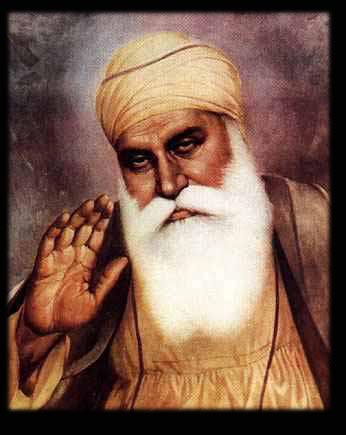 |
|
|
|
|
|
|
|
|
|
|
|
|
|
|
|
|
|
|
|
|
|
|
|
|
|
|
|
|
|
|
|
|
|
|
|
|
|
|
One
of Sobha Singh's Greatest Masterpieces - "Guru Nanak" in the "Aashirwad"
pose. This was created during late 50's. The hand of Guru Nanak was recreated
by a renowned palmist Pundit Agnihotri of Hamirpur after a thorough study of
the 'Janam Patri' of Guru Nanak |
|
|
|
|
|
|
|
|
|
|
|
|
|
|
|
|
|
|
|
|
|
|
|
|
|
Function
of Art is to portray human emotions and convey the abstract through the concrete-Sobha
Singh |
|
|
|
|
|
|
|
|
|
|
|
A
frail Sikh boy, Sobha Singh was rushing towards a creek in the river Beas at
Sri Hargobindpur to commit suicide. His father, S. Deva Singh, a stern cavalry
officer, had rebuked him for wasting time in drawing figures on the walls of
their house. The boy was headstrong and resisted all attempts of his father
to discipline him. Deva Singh was angry at his stubbornness. While horses would
obey him and would stop, gallop or jump at his command, his son would not obey
his orders and continued to spoil the walls of his ancestral house with his
scribbles. |
|
|
|
|
|
|
|
|
|
|
|
|
|
|
|
|
|
|
|
|
|
|
|
|
|
|
|
|
|
|
|
|
|
|
|
|
|
|
|
|
|
|
|
|
|
|
|
Realisation
Fed up with the rebukes of his father, Sobha Singh felt life was not worth
living and decided to die. He learnt that a woman neighbour, who had contacted
chill, had died of pneumonia. He felt that perhaps it was the easiest way
to end his life. He ran towards the Beas, jumped over sand dunes, and when
he started perspiring, he plunged into a creek. He did not catch chill but
felt ravenously hungry. He gorged himself with trapa nuts (singhara) which
grew in the creek. He soon realised that life was a precious gift of God and
deserved to be preserved and lived. |
|
|
|
|
|
|
|
|
|
|
 |
|
|
|
|
|
|
|
|
|
|
|
|
|
|
|
|
|
|
|
|
|
|
|
|
|
|
Saint
Artist-Sobha Singh |
|
|
|
|
|
|
|
|
|
|
|
|
|
|
|
|
|
|
|
|
|
|
|
|
|
|
|
|
|
|
|
|
|
|
|
|
|
|
|
|
|
|
|
|
|
|
|
|
|
|
|
|
|
|
|
|
|
|
|
|
|
|
|
|
|
|
|
Sobha
Singh was an agile boy who enjoyed somersaulting. He met with an accident while
somersaulting over a gate. His right leg was fractured and he became lame for
life. However, his disability did not discourage him and he derived comfort
from the fact that Byron, the famous poet was also lame, but continued to be
admired by good looking women.
|
|
|
|
|
|
|
|
|
|
|
|
|
|
 |
|
|
|
|
|
|
|
|
|
|
|
|
|
|
|
|
|
|
|
|
|
|
|
|
|
|
|
|
|
|
|
|
|
|
|
|
|
|
|
|
|
|
|
|
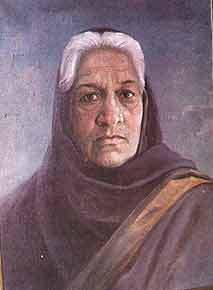 |
|
|
|
|
|
|
|
|
|
|
|
|
|
|
|
|
|
|
|
|
|
|
|
Sobha
Singh with Dr. Rajindra Prasad, President of India, at the exhibition of his
paintings held at Delhi |
|
|
|
|
|
|
|
|
|
|
|
|
|
|
|
|
|
|
|
|
|
|
|
|
|
|
|
|
|
|
|
|
|
|
|
|
|
|
|
|
|
|
|
|
|
|
|
|
Bibi
Inder Kaur-wife of Sobha Singh |
|
|
|
|
|
|
|
|
|
In
1906, when he was five years old, his mother, Ichhran Devi, died. He was brought
up by his sister Lakshmi Devi, who lived at Amritsar. At the age of 15 Sobha
Singh got admitted to the Industrial School, Amritsar, where he completed one
year's course in art and craft. In 1919 he joined the Indian Army as a draughtsman
and spent four years in Baghdad, where he studied books on European painting
and also got inspiration from the works of amateur English painters. |
|
|
|
|
|
|
|
|
|
Spiritual
Glow
In 1923 Sobha Singh returned to India, opted to work as a freelance painter
and set up his studio near Chowk Phawara. At that time the morcha of Gurn-Ka-Bagh
was in full swing. He watched with reverence the spiritual glow on the faces
of the Sikh satyagrahis. He found the theme for hisart and made up his niind
to paint the Sikh Gurus who kept their heads high under the most adverse circumstances. |
|
|
|
|
|
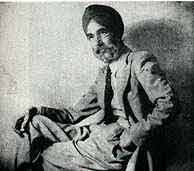 |
|
|
|
|
|
|
|
|
|
|
|
|
|
Sobha
Singh-Profile of a sophisticated personality & the Art Director of the film
'But Taraash' |
|
|
|
|
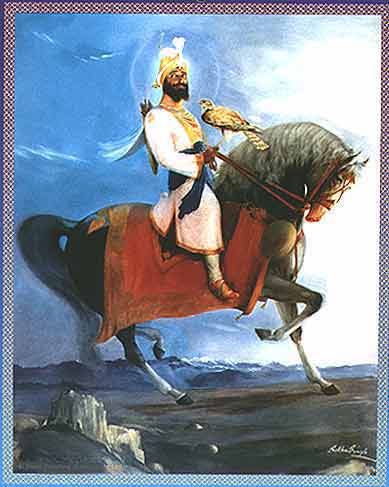 |
|
|
|
|
|
|
|
|
|
|
In
1926 he shifted to Lahore and had his studio in an upper storey room near the
crossing of Anarkali Bazaar and the College Road. Below his studio was a fruit-vendor's
shop. At that time I was a student of Botany in the Government College, Lahore.
In 1929, while writing my thesis for MSc. on the algae of Punjab, I happened
to meet' him and got my pencil sketches of algae drawn in black ink by him.
I also saw some paintings of beautiful salwar-clad Punjabi women hanging on
the walls. They delighted me. Here at last, I felt, was a true Punjabi artist
painting genre scenes from the life of the people of Punjab. |
|
|
|
|
|
|
|
|
|
|
|
|
|
Guru
Gobind Singh-Lord of the White Falcon |
|
|
|
|
|
|
|
|
|
|
|
|
|
|
|
|
|
Preet
Nagar
In 1931 Sobha Singh migrated to Delhi and set up his studio in Connaught
Place. As a commercial artist he was a great success and painted some out-standing
posters for the Indian Railways and the Post and Telegraph Depart-ment. His
patron was Col. G.D. Tate, who appreciated his work and gave him encouragement.
Sobha Singh painted a number of outstanding posters. -As an example of his
work, a poster showing the pomp and splendour of the princely 'State of Jaipur,-
- is worthy of mention. The Maharaja is riding on a splendidly caparisoned
elephant. In the foreground are musicians and elegantly dressed retainers.
From the balconies, women of the harem are enjoying the sight of the royal
procession.
Gurbux Singh, editor of the Punjabi Journal Preet Lari founded a colony of
idealists at a place' midway between Lahore and Amritsar, which he named Preet
Nagar. At this place, located in the countryside of Tehsil Ajnala, writers,
painters and educationists gathered from all over Punjab. In 1942 Gurbux Singh
invited Sobha Singh to live at Preet Nagar. So Sobha Singh was not finding
fulfillment in commercial art, which could provide him a living but did not
give him spiritual satisfaction.
He readily accepted the invitation of Gurbux Singh. At Preet Nagar his companions
were Nanak Singh, novelist, and Balwant Gargi, essayist and dramatist. His
studio became popular with lovers of art. It is difficult for two strong individualists
to live together. Gurbux Singli got the feeling that Sobha Singh's studio
had become a critics cell and after about six months they decided to part
company. |
|
|
|
|
|
|
|
|
|
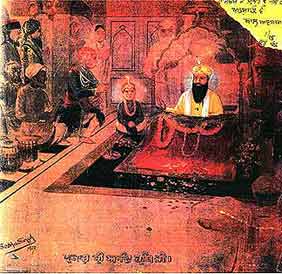 |
|
|
|
|
|
|
|
|
|
|
|
|
|
|
|
|
|
|
|
|
|
|
|
|
|
|
|
|
|
|
|
|
|
|
|
|
|
|
|
|
|
|
|
|
|
|
|
|
|
|
|
|
|
|
|
An
early painting by Sobha Singh done in 1927 showing Guru Arjan reading from the
Adi Granth, while the infant Guru Hargobind keenly sitting by his side. |
|
|
|
|
|
|
|
|
|
|
|
|
|
|
|
|
|
|
|
|
|
|
Gratitude
In August 1947, Sobha Singh migrated from Lahore to India He left Lahore
empty-handed, leaving behind more than 60 paintings and his household goods.
He reached Andretta in the Kangra Valley along with a pupil. It was raining
heavily. It was a cold evening and nobody gave them shelter. He and his pupil
spread their bedding on a plank in front of a shop. On seeing their plight,
a shopkeeper allowed them to spend the night in a shed used for storing tealeaves.
It was indeed a cold reception in the Kangra Valley. After spending about
eight months in a rented room, he decided to build a cottage.
|
|
|
|
|
|
|
|
|
|
|
|
|
|
|
|
|
|
|
|
|
|
|
|
|
|
|
|
|
|
|
|
|
|
|
|
|
|
|
|
|
|
|
|
|
|
|
|
|
|
|
|
|
He
bought two kanals of land and left for Simla and Bombay to earn some money to
build the cottage.
In October 1947, he went to Delhi where disorder prevailed on account of
influx of refugees from Pakistan, and he did not find any lucrative occupation.
In December 1948, when I was posted to Ambala on transfer from Delhi after
a hectic tenure as Deputy Commissioner, I invited him to live with me. During
that period, one day I saw him kneading a lump of clay. I asked him why he
was doing so. He told me that he wanted to prepare my bust. I was surprised,
as I had known him as a painter and not as a sculptor. I gave him a few sittings
and in a week's time he showed me the bust which, according to the people
who saw it, had a remarkable likeness. This bust was cast in bronze and it
is now in the library of Chandigarh Museum. |
|
|
|
|
|
|
|
|
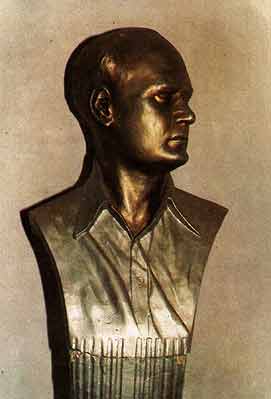 |
|
|
|
|
|
|
|
|
|
|
|
|
|
|
|
|
|
|
|
Bust
of Dr. Randhawa by Sobha Singh |
|
|
|
|
|
|
|
|
|
|
|
|
|
|
I arranged an exhibition of Sobha Singh's paintings in the Sirhind Club,
Ambala Cantonment. A number of his paintings were purchased by the officers
of the Indian Air Force. Here he also painted a portrait of Guru Gobind Singa
which I purchased for the library which was established in Ambala City.
With the funds raised by the sale of his paintings, Sobha Singh built
a cottage on the outskirts of Andretta village. This cottage is now one of
the main attractions for people who visit the Kangra Valley. It is picturesquely
situated; to its north is the snow-covered Dhauladhar and below it are green
paddy fields.
|
|
|
|
|
|
|
|
|
|
|
|
|
|
|
|
|
|
|
|
|
|
|
|
|
|
|
|
|
|
|
|
|
|
|
|
|
|
|
|
|
|
|
|
|
|
|
|
|
|
|
|
|
|
|
|
|
|
|
|
|
|
|
|
|
|
|
|
|
|
|
|
|
|
|
|
|
 |
|
|
|
|
|
|
|
|
|
|
|
|
|
|
|
Dr.
M.S. Randhawa with Sobha Singh |
|
|
|
|
|
|
|
|
|
|
|
|
|
|
|
|
|
|
|
|
|
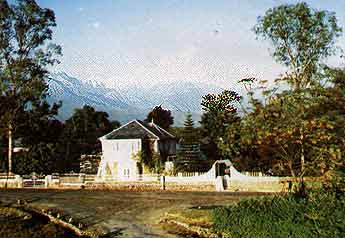 |
|
|
|
|
|
|
|
|
|
|
|
|
|
|
|
|
|
The
cottage of Sobha Singh under the snow-covered Dhauladhar mountain range in Kangra |
|
|
|
|
|
|
|
|
|
|
|
|
Sobha
Singh was inspired by the paintings of the Kangra School in which charming women
are depicted. His medium was oil painting on canvas. Even with this medium he
was able to achieve delicacy of treatment and minuteness of decorative detail
which we see in Kangra miniatures. His painting of a young bride sitting in
a palanquin, with a cuckoo in front, reflects the charm of the Kangra folk song
"bhabi cuckoo keehan bolda." In another charming painting, a Kangra
bride, innocent and shy, is sitting on the floor with two wicker baskets on
her right. |
|
|
|
|
|
|
|
|
|
|
|
|
|
|
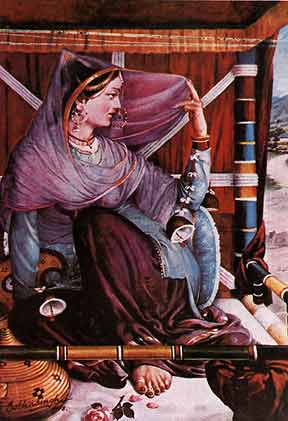 |
|
|
|
|
|
|
|
|
|
|
|
|
|
|
|
|
|
|
|
|
|
|
|
|
|
|
|
|
|
|
|
|
|
|
|
|
|
|
|
|
|
|
|
|
|
|
|
|
|
|
|
|
|
|
|
|
|
|
|
|
|
|
|
|
|
|
|
|
|
|
|
|
|
|
|
|
|
|
|
|
|
|
 |
|
|
|
|
|
|
|
|
|
|
|
|
|
|
|
|
|
|
|
|
|
|
|
|
|
|
|
|
Capturing
the beauty of the Kangra brides |
|
|
|
|
|
|
|
|
|
|
|
|
|
|
|
|
|
|
|
|
|
|
|
|
|
|
|
|
|
His earliest painting was of Guru Nanak Dev as a child, painted in 1934.
It shows the influence of Christian art of the Middle Ages. Guru Nanak Dev,
the child, is held by his mother Tripta in her lap. She is surrounded by women
of the household. In the background are Shiva, Rama and Sita and Saraswati
showering flowers on the. holy child. |
|
|
|
|
|
|
|
|
|
|
|
|
|
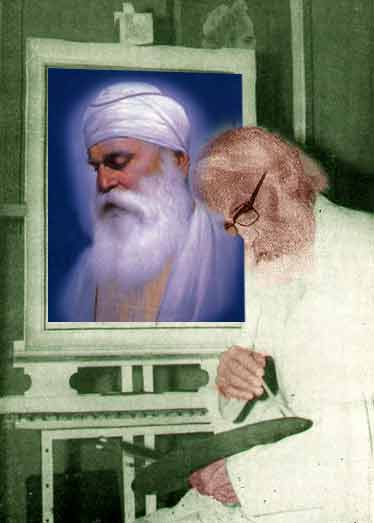 |
|
|
|
|
|
|
|
|
|
|
|
|
|
|
|
|
|
|
|
|
|
|
|
|
|
|
|
|
|
|
|
|
The
earliest portrait of Guru Nanak Dev, entitled "Nam Khumari Nanaka Charhi
rahe din raat" was painted in 1937. Here the Guru, with his half-closed
eyes, is shown in a mystic trance. No wonder, this painting reached many Sikh
homes and was worshipped as an icon. The best paintings of Guru Nanak Dev by
Sobha Singh are in Chandigarh Museum. Realising their great spirit and historic
value, I purchased them for Chandigarh Museum, where they are viewed with reverence
by the visitors. Sobha Singh appropriately called them "Meditations on
Guru Nanak". After all, there is no authentic portrait of Guru Nanak Dev
and artists painted him as they imagined him to be. |
|
|
|
|
|
|
|
|
|
|
|
|
|
|
|
|
|
|
|
|
|
|
|
Guru
nanak being painted by the maestro |
|
|
|
|
|
|
|
|
|
|
|
|
|
|
|
|
|
|
|
|
|
|
|
|
|
|
|
|
For
the Gurdwara of Bangla Sahib in New Delhi, Sobha Singh painted a scene showing
Guru Harkishan healing the sick. It is very Indian in spirit. The portraits
of Guru Nanak Dev are in shanta rasa The object of the artist was to convey
his feelings of peace and harmony through these paintings. His paintings of
the tenth Sikh Guru, Guru Gobind Singh, are in vira rassa. An early painting
shows the Guru seated on a throne holding a hawk. A later painting shows the
Guru riding a spirited horse. In the background are the Shivalik hills. The
determined look of the Guru is symbolic of his defiance of tyranny of the Mughal
rulers. |
|
|
|
|
|
|
|
|
|
|
|
|
 |
|
|
|
|
|
|
|
Sobha Singh was drawn very early to romantic tales of Punjab. In 1929 he
painted Sassi lost in the sand dunes of Sind. She is painted as a charming
young girl clad in salwar kameez, running in search of her lover who was forcibly
carried away. Sassi typifies ideal Indian womanhood: selfless, devoted and
loyal to her lover for whose sake she bore great hardships and ultimately
sacrificed herself. Her selfless love inspired the poets and the people of
Punjab and Sind; A fine tribute to her love was paid by the Punjabi poet Hashim,
who wrote a ballad which is still popular in Punjab on both sides of the border.
Omar Khayyam's poetry on wine and music was a favourite with the English
educated middle class Punjabis in the thirties. In a painting Sobha Singh
has shown the poet strumming a mandolin reclining against a bolster. To the
right is a beautiful young woman offering him a cup of wine. |
|
|
|
|
| Guru
Gobind Singh at the Anandpur Fort |
|
|
|
|
|
|
|
|
|
|
|
|
|
|
 |
|
|
|
|
|
|
|
|
|
|
|
|
|
|
|
|
|
|
|
|
|
|
|
|
|
|
The
Studio of Sobha Singh in Kangra |
|
|
|
|
|
|
|
|
|
|
|
|
|
|
|
|
|
|
|
|
|
|
Another
romantic tale of Punjab, which attracted the attention of this artist, is that
of Sohni and Mahiwal, Sohni's love and ensuing tragedy touched the hearts of
the people of India. Fazl Shah, the Punjabi poet of Lahore, wrote the love tale
in verse during the reign of Maharaja Ranjit Singh in 1824. But there must have
been earlier versions because it had already become a favourite theme in Mughal
and Rajput paintings. |
|
|
|
|
|
|
Sobha
Singh's most admired painting is that of Sohni-Mahiwal, which he painted in
1944. This painting he had entrusted, along with his other paintings, to
a friend at Sheikhupura, and it remained in Pakistan. Sobha Singh painted it
again in 1948 and sold it to a customer. He painted it for the third time and
sold it to Maharaja Karan Singh of Jammu and Kashmir, but retained its copyright.
He got it printed from a quality press, and it was sold all over the country
and is found in most middle class Punjabi homes. The lithe figure of Sohni,
with a wet dupatta clinging to her torso reveals her physical charm. It is a
delightful representation of feminine beauty. |
|
|
|
|
|
|
|
|
|
|
|
|
|
|
|
|
|
|
|
|
|
|
|
|
|
|
|
|
|
|
|
|
|
|
|
|
|
|
|
|
|
|
|
|
|
|
|
|
|
|
|
|
|
|
|
|
|
|
|
|
|
|
|
|
|
|
|
|
|
|
|
|
|
|
|
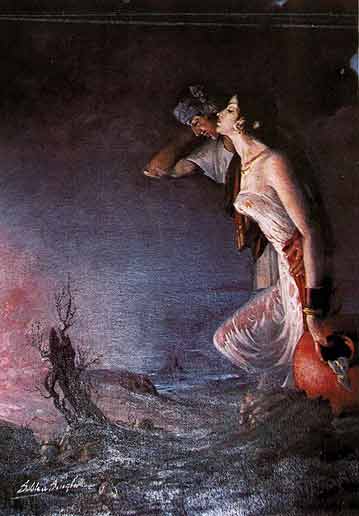 |
|
|
|
|
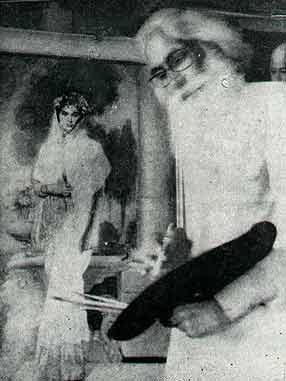 |
|
|
|
|
|
|
|
|
|
|
|
|
|
|
|
|
|
|
|
|
|
|
|
|
|
|
|
|
|
|
|
|
|
|
|
|
|
|
|
|
|
|
|
|
|
|
|
|
|
|
 |
|
|
|
|
Sobha
Singh paints Maharani Karan Singh, who were his biggest admirers and had many
paintings by him including the renowned "Sohni Mahiwal" |
|
|
|
|
|
|
|
|
|
|
|
|
|
|
|
|
|
|
|
|
|
|
|
|
|
|
|
|
|
|
|
|
|
|
|
|
|
|
|
|
|
|
|
|
|
|
|
|
|
|
|
|
|
|
|
|
|
|
|
|
|
|
|
|
|
|
|
|
|
|
|
|
|
|
|
|
|
|
|
Love of the romantic led Sobha Singh to paint Shah Jahan and Mumtaz Mahal
in a painting to which he gave the title "Her Last Desire".
In spite of the developments in photography, including colour photography,
portrait painting still remains an art. A good portrait gives an idea of the
character of the sitter, which no photographs can provide. Besides, the colour
tones of a good portrait can never be matched by a colour photograph. |
|
|
|
|
|
|
|
|
|
|
|
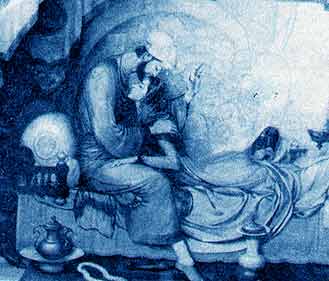 |
|
|
|
|
|
|
|
|
|
|
|
|
|
|
|
|
|
|
|
|
|
|
|
|
|
|
|
|
Last
Desire - Origin of the Taj Mahal |
|
|
|
|
|
|
|
|
|
|
|
|
|
|
|
|
|
|
|
|
|
|
Sobha Singh has painted a number of outstanding portraits. In 1948 he painted
a portrait of Mahatma Gandhi for the Public Relations Department of the Punjab
Government. The Mahatma is depicted wrapped in a white khadi chadar. It is
a symbol of truth and purity, the twin ideals which inspired the great leader.
This portrait was accepted as an official portrait of the Mahatma by the Punjab
Government and was printed in colour and displayed in its offices.
For the Postgraduate Medical Research Institute (PGI), Chandigarh, he painted
a portrait of Partap Singh Kairon, a former Chief Minister of Puniab, who
was the founder of this great institution and saved it when it was dubbed
as a white elephant by mindless critics. In the portrait, the firmness of
Kairon, his ruthlessness and determination are well depicted. |
|
|
|
|
|
|
|
|
|
|
|
As
a tribute to our friendship, be did my portrait also. My major work has been
rediscovery and popularisation of Kangra painting and its folk songs, and beautification
of India by landscaping, involving the planting of flowering trees. Sobha Singh
painted the snow-covered Dhauladhar mountain of the Kangra Valley, as seen from
his home at Andretta in the background and a flowering peach in the foreground.
People who know me are of the view that this Portrait is life like and conveys
to the viewer the nature of my work and the environment of the Kangra Valley,
which I passionately love. |
|
|
|
|
|
|
|
|
|
|
|
|
|
|
|
|
|
|
|
|
|
|
|
|
|
|
|
|
|
|
|
|
|
|
|
|
|
|
|
|
|
|
|
|
|
|
|
|
|
|
|
|
|
|
|
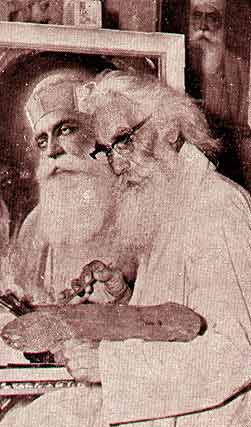 |
|
|
|
|
|
|
|
|
|
|
|
|
|
|
|
|
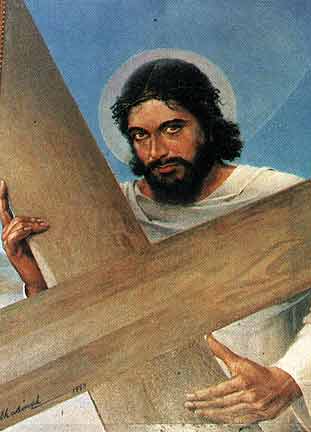 |
|
|
|
|
|
|
|
|
|
|
|
|
|
|
|
|
|
|
|
|
|
|
|
|
|
Art Centre
Sobha Singh's cottage at Andretta has become an art centre, which is visited
by scores of his admirers. Local hill-men and women also drop in. For their
benefit he has constructed a separate gallery in which apart from his portraits
of the Sikh Gurus, he has displayed the paintings of Sri Krishna, Sri
Rama, Sheikh Farid and Jesus Christ. |
|
|
|
|
|
|
|
|
|
|
|
|
|
|
|
|
|
|
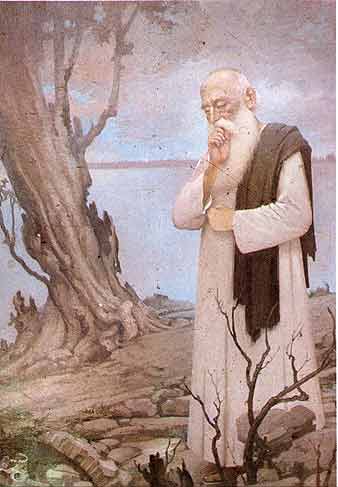 |
|
|
|
|
|
|
|
|
|
|
|
|
|
|
|
|
|
|
|
|
Jesus
with the cross |
|
|
|
|
|
|
|
|
|
|
|
|
|
|
|
|
|
|
|
|
|
|
|
|
|
|
|
|
|
|
|
|
|
|
|
|
|
|
|
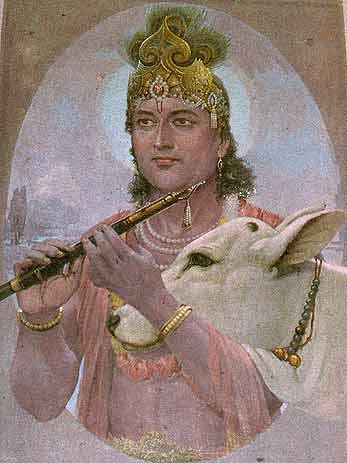 |
|
|
|
|
|
|
|
|
|
|
|
|
|
|
|
|
|
|
|
|
|
|
|
|
|
|
Sheikh
Farid |
|
|
|
|
|
|
|
|
|
|
|
|
|
|
|
|
|
|
|
|
|
|
|
|
|
|
|
|
|
Lord
Krishna |
|
|
|
|
|
|
|
|
|
|
|
|
|
|
|
|
|
|
|
|
|
|
|
|
|
Sobha
Singh is revered by the Punjabis as a people's artist. In 1973, at the initiative
of Mr. I.K. Gujral, the Union Ministry of Information and Broad-casting prepared
a documentary on him. In 1974 the Punjab G6vernment acclaimed him as the State
artist. In 1982 the Punjab Arts Council gave him its highest award. In 1983
the Government of India conferred upon him a Padma Sri.
Sobha Singh worked hard to earn his laurels. He continued to paint with zest
for thirty years. A disciplined life and methodical working have been the
secrets of his creativity. No other artist has made such an impact on the
spiritual life of the people of Punjab. When the scribbles and daubs of paint,
which pass for abstract art are forgotten, Sobha Singh's paintings will live
and be cherished as treasures, as they have a message to convey. They have
undoubtedly a unique place in the art heritage of Punjab.
|
|
|
|
|
|
|
|
|
|
|
|
 |
|
|
|
|
|
|
|
|
|
|
|
|
|
|
|
|
|
|
|
|
|
|
|
|
|
|
|
|
|
|
|
|
|
|
|
|
|
|
|
|
|
|
|
|
|
|
|
|
|
|
|
|
|
|
|
|
|
|
|
|
|
|
|
|
|
|
|
|
|
|
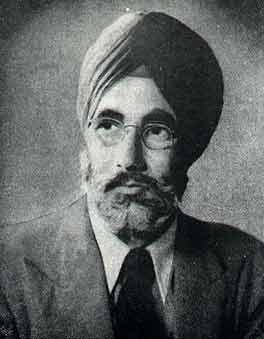 |
|
|
|
|
|
|
|
|
|
|
|
|
Sobha
Singh with actor/writer Balraj Sahni and Bibi Gurcharan Kaur, a close relation
and caretaker |
|
|
|
|
|
|
|
|
|
|
|
|
|
|
|
|
Sobha
Singh in his fifties |
|
|
|
|
|
|
|
|
|
|
|
|
|
|
|
|
|
|
|
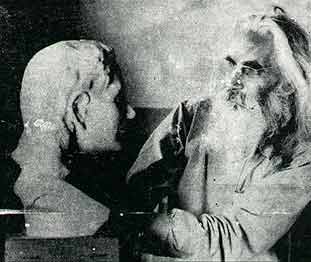 |
|
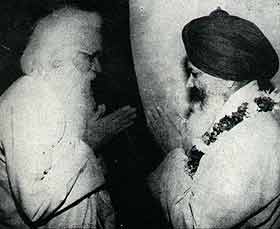 |
|
|
|
|
|
|
|
|
|
|
|
|
|
|
|
|
|
|
|
|
|
|
|
|
|
|
|
|
|
|
|
|
|
|
|
|
|
|
|
|
|
|
|
|
|
|
|
|
|
|
|
|
|
|
|
|
|
|
|
|
Sobha
Singh with Sant Longowal |
|
|
|
|
|
|
|
|
|
|
|
|
|
|
|
|
|
|
|
|
|
|
|
|
|
|
|
|
|
|
|
|
Making
bust of Amrita Pritam - the poetess |
|
|
|
|
|
|
|
|
|
|
|
|
|
|
|
|
|
|
|
|
|
|
|
|
|
|
|
|
|
|
|
|
|
|
|
|
|
|
|
|
|
|
|
|
|
|
|
|
|
|
|
|
|
|
|
|
|
|
|
Most
of the above information and pictures with courtesy of Madanjit Kaur from her
book "Sobha Singh" |
|
|
|
|
|
|
|
|
|
|
|
|
|
|
|
|
|
|
|
|
|
|
|
|
|
|
|
|
|
|
|
|
|
|
|
|
|
|
|
|
|
|
|
|
|
|
|
Next
- to ART Gallery of Sobha Singh |
|
|
|
|
|
|
|
|
|
|
|
 |
 |
 |
 |
 |
 |
 |
 |
 |
 |
 |
 |
 |
 |
 |
 |
 |
 |
 |
 |
 |
 |
 |
 |
 |
 |
 |
 |
 |
 |
 |
 |
 |
 |
 |
 |
 |
 |
 |
 |
 |
 |
 |
 |
 |
 |
 |
 |
 |
 |
 |
 |
 |
 |
 |
 |
 |
 |
 |
 |
 |
 |
 |
 |
 |
 |
 |
 |
 |
 |
 |
 |
 |
 |
 |
 |
 |
 |
 |
 |
 |
 |
 |
 |
 |
 |
 |
 |
 |
 |
 |
 |
 |
 |
 |
 |
 |
































